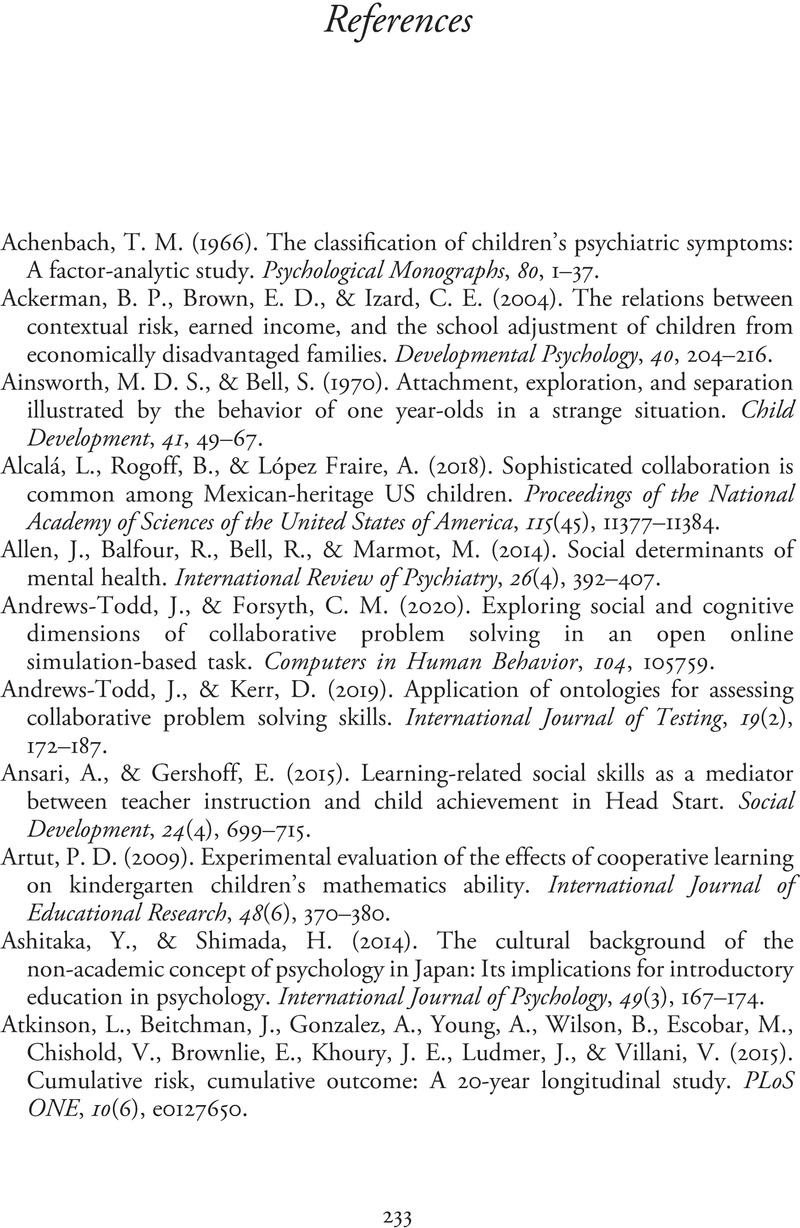Book contents
- Developing Together
- Developing Together
- Copyright page
- Dedication
- Contents
- Figures
- Tables
- Preface
- Acknowledgments
- Part I Collaborative Competence
- Part II Elements of Collaborative Competence
- Part III A New Theory and Method for Assessing Development via Collaborative Competence
- Part IV Implications for Theory, Research, and Practice
- References
- Index
- References
References
Published online by Cambridge University Press: 07 May 2024
- Developing Together
- Developing Together
- Copyright page
- Dedication
- Contents
- Figures
- Tables
- Preface
- Acknowledgments
- Part I Collaborative Competence
- Part II Elements of Collaborative Competence
- Part III A New Theory and Method for Assessing Development via Collaborative Competence
- Part IV Implications for Theory, Research, and Practice
- References
- Index
- References
Summary

- Type
- Chapter
- Information
- Developing TogetherUnderstanding Children through Collaborative Competence, pp. 233 - 259Publisher: Cambridge University PressPrint publication year: 2024



